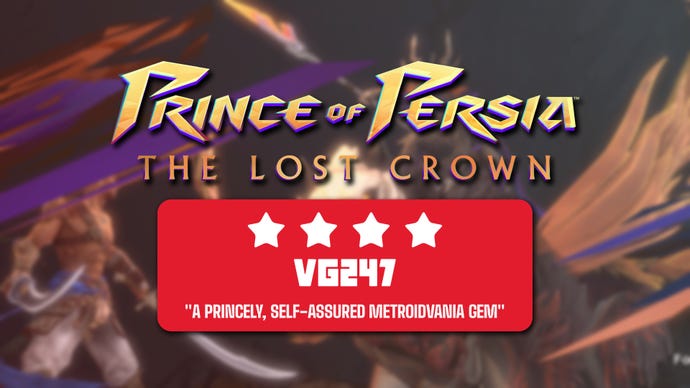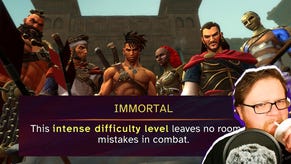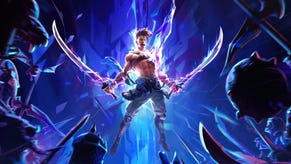Prince of Persia The Lost Crown review: Ubisoft’s Metroidvania royal treatment
A princely, self-assured Metroidvania gem whose glamour is only tarnished by a few unwieldy design decisions.
The key tenet of a Metroidvania game is that you backtrack – you journey back to once-explored areas and use your newly-acquired powers to forge new paths, reach new ledges, backflip into obscured passageways that contain treasure. It’s part of the game; intuitive and self-aware, and smart developers leave breadcrumbs for you to nibble on as you head back through to the beginning of the game, your avatar’s body humming with new-found power. En route, you may discover more things – secrets, more hidden paths, respawned enemies with a grudge – and you get distracted and pulled from your circular orbit.
Prince of Persia: The Lost Crown has mastered this ebb and flow, artisanally guiding you around its expansive map with an almost sadistic wave of its hand. The story, cheesy and wrought as it is, is about humans pretending at politics at the behest of an absent god, and that’s what you feel like as a player as you trek from east to west, again, puppeted by the strings of the deified powers of the developer. Why? Because you must, because you crave power, because you want to set things right.
But the story isn’t why you came here, is it? Unless you’re hungry for the subtext and lore buried in Hollow Knight’s Hallownest and told in the margins, Metroidvania titles have never really excelled at stories – it’s best to keep things simple: go here, do this, win. Prince of Persia: The Lost Crown’s biggest failing is attempting to knit a complex narrative together, realised with haughty dialogue and Saturday Morning Cartoon visuals. It’s all A Bit Much. But it’s set dressing for the real star of the show: the map.
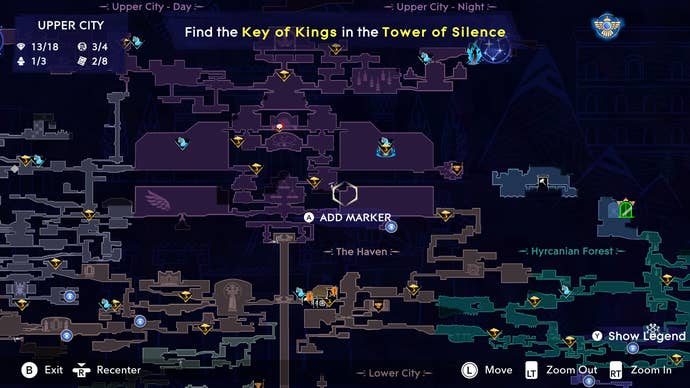
Yes, the map. An elaborate tangle of passageways give way to thick knots of trap rooms that open out into expansive oceanscapes, overlooked by towering buildings and intimidating mountains. Checkpointed scarcely by Wak-Wak Trees and knitted together by canny shortcuts, this map is instantly up there with some of the best Metroidvania maps you can think of – evoking memories of Hollow Knight, Ori, and the dual eponymous classics that give the genre its name.
It’s a shame, then, that fast travel is a chore. Enabled by infrequent tombstones that are oddly clumped around parts of the map, your adventuring flow sometimes comes to a grinding halt as you need to backtrack – fine, that’s the game – but through a particular route you’ve done so much you’ve worn boot marks into its marble floor. You sigh, get to it, only to realise you need to head back, again. Christ. OK, this time we’re going up, at least I can see a fast travel terminal up there-- oh, no, I can’t access it yet. Back down we go.
But for every ounce of frustration weighed out by The Lost Crown, you’re paid back double with wonder. Like the powers – double jump, rewind, the ‘time knife’, a short-range teleport, something akin to Devil May Cry’s ‘Devil Bringer’ – The Lost Crown’s best ideas are scattered to the four winds and nestled away in the corners of its world. Whether its a massive dial that requires three puzzles to work (and then is a puzzle in itself to operate), or a room full of lethal, slamming blocks that can – to a canny platformer – be used to reach the dark corner of a doomed tomb, the game will keep surprising you, even when you think you’ve hit its peak.
Just get through those opening hours. They can be a crawl. An underpowered protagonist (Sargon, his name is here) is no fun, and it all feels a bit muted and staccato until you start to get your powers. But, as you approach the latter half of the game’s 25-hour runtime, and you’ve got a blossoming sense of what Sargon can really do, this game shows its true colours: a rainbow-hued cornucopia of creativity and ingenuity. Using up to five different powers to flip, jump and slide your way through a gauntlet – only to pick up one measly collectible coin – is not irritating, but empowering. The Lost Crown frequently has a way of making you feel like a genius, and it’s platforming catnip.

Incongruously, and bafflingly, boss encounters have the opposite effect on your brain chemistry. There are some nice ideas in these big fights, but some of the attacks aren’t telegraphed well – and what you’re expected to do to counter some moves is unclear (not ideal when they take up the whole screen, or stun lock you, or can kill you in one shot). Any good will and momentum you build up as you steamroller your way towards a boss can quickly evaporate and turn to bitter frustration within minutes. More than once, I found myself brute-forcing through a boss fight in order to get back to spelunking through the wondrous chambers of Mount Qaf.
But at least there are accessibility options that let you either bypass or trivialise the worst bits of the game. Stuck on a platforming section? Turn on the assist, and portal your way to the end. Fed up with that massive, anchor-wielding prick on the pirate ship? Knock the difficulty slider down and reset it when you’re done. The dedication to letting you determine the challenge and pace of your adventure should be admired – hell, should even become industry-standard. Ubisoft has discovered something magical here, and The Lost Crown will be praised for it for years to come.
Regular combat is more fun. You may be tempted to simply mash away at your basic attacks, but if you treat the game like a 2D fighter (more BlazBlue than Street Fighter), you’ll soon start to appreciate the depth Ubisoft has wrangled into its core. Low attacks chaining into launchers, where you can juggle with your bow, charge a special attack, create a ‘shadow’ of yourself, unleash the attack and then rewind and do it again!? Phwoar. It makes you feel… well, like a prince. How apt.
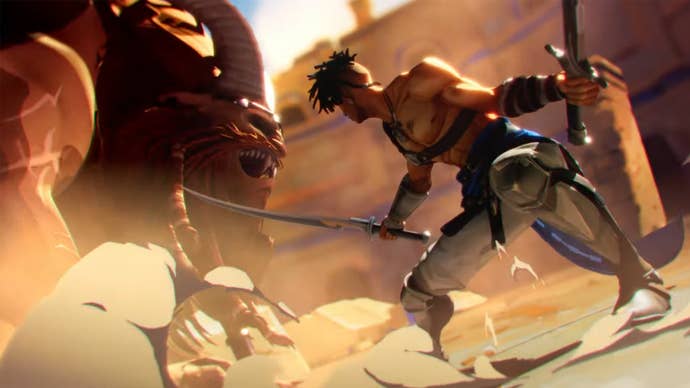
Prince of Persia: The Lost Crown is a smart game that makes you feel even smarter. It’s a Metroidvania that’s learned from the best, but without sacrificing any element of its own personality – for better and for worse. Beneath the gaudy graphics and cheeseball story, there’s a hardcore platforming heart bruised by punishing combat. Middling boss design aside, this is a game that you can sink an easy 30 hours into. And you’ll come away feeling clever, powerful, and dexterous.
